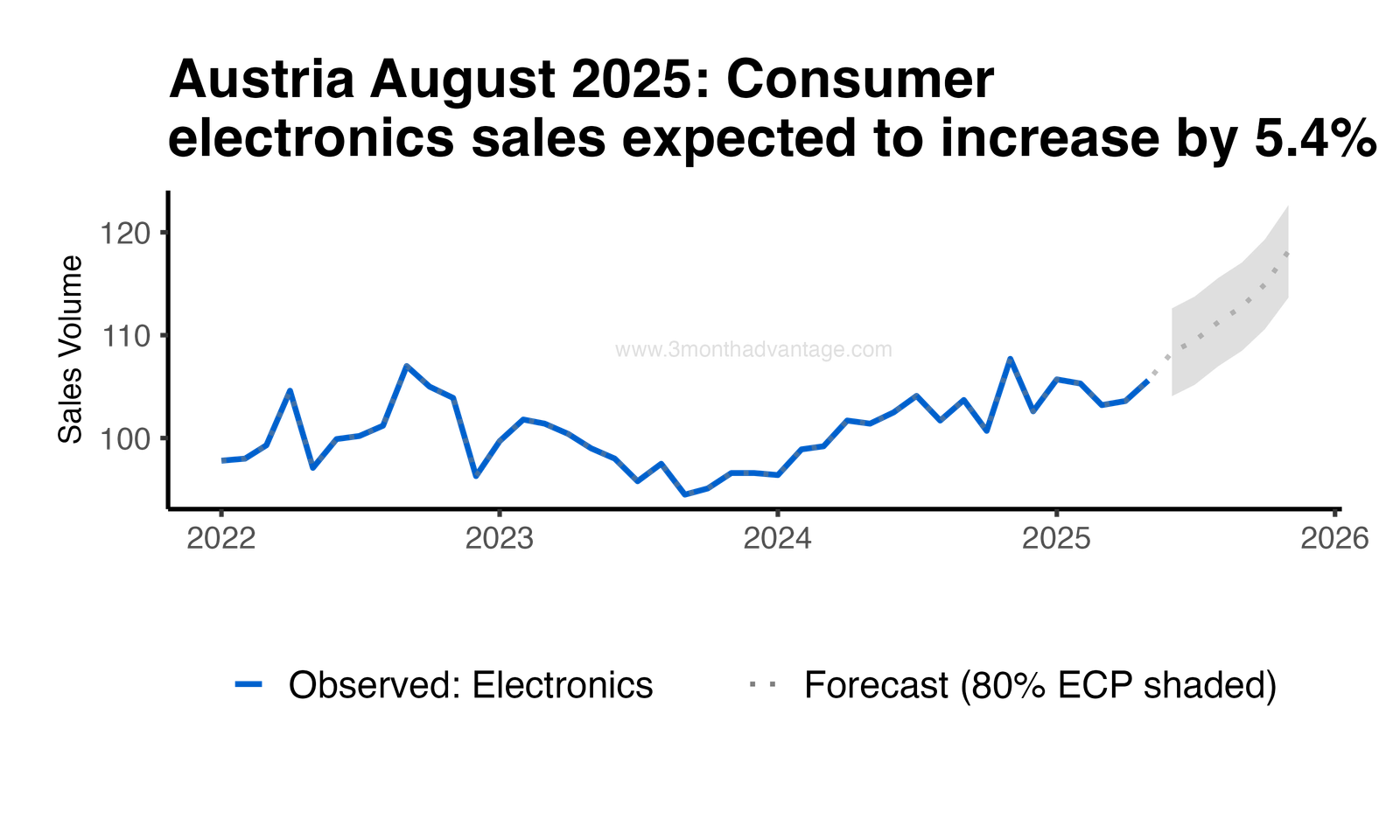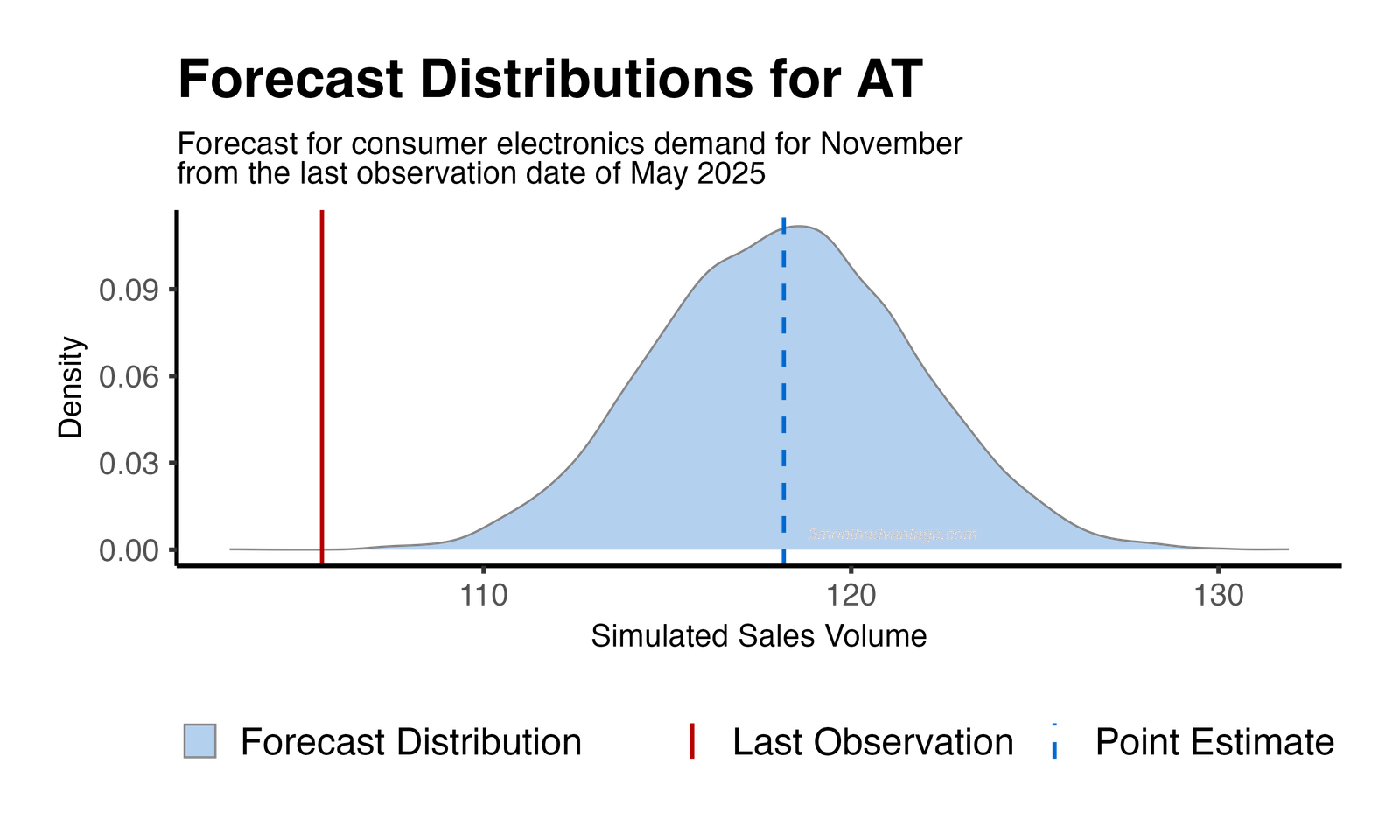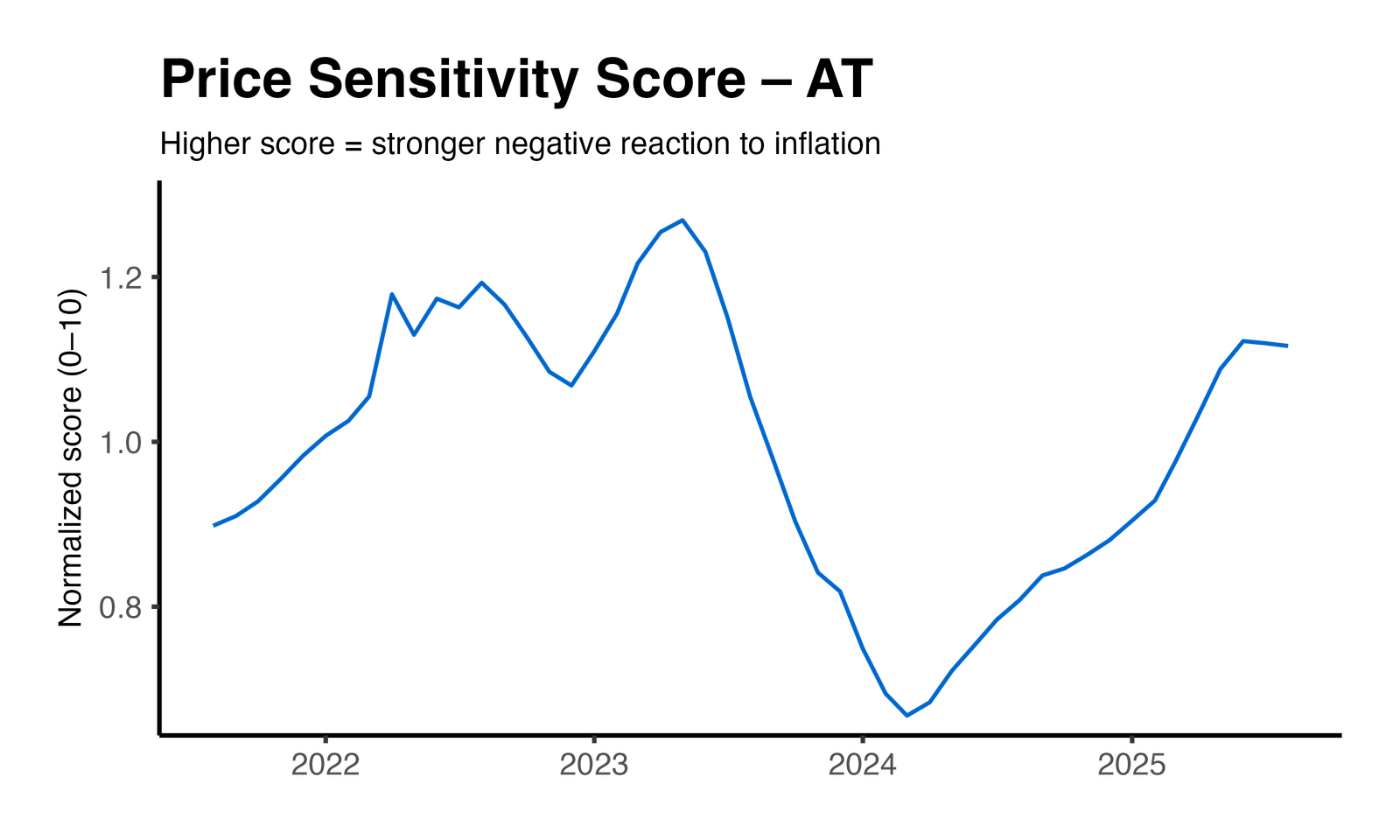
Consumer electronics sales in Austria are expected to increase by 5.4% in August, with a month-on-month growth of 1.7%. This positive trend is likely to persist, with sales projected to rise by an additional 11.9% by November. The three-month forecast volatility in the consumer electronics segment is at 1.5, showing an increase of 0.27 from the previous year. These projections are based on the Eurostat consumer electronics retail index data, suggesting a positive outlook for the sector despite the observed rise in volatility.

Between May 2025 and November 2025, there is a 95% probability that demand for consumer electronics will increase, with the central peak of the forecast distribution indicating the most likely outcomes and the wider tails representing less probable variations. This suggests that businesses should consider adjusting pricing, inventory, and promotional strategies to accommodate the anticipated rise in demand.

Over the past year in Austria, the normalized elasticity score experienced a year-over-year increase of 38%, indicating a significant rise in market sensitivity. Concurrently, the year-over-year volatility of this score increased by 23%, suggesting a modest rise in market fluctuations. These figures are based on a multilevel model incorporating macroeconomic controls, with the price-effect p-value calculated at 0.016, confirming statistical significance. The market's current relative insensitivity compared to peers suggests that businesses should consider more aggressive pricing or promotional strategies to effectively capture consumer interest.

Method: Price Elasticity Insights